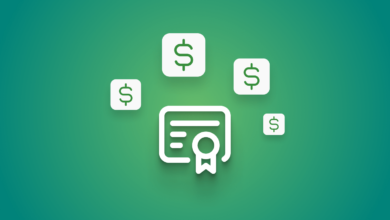How to Build a Coaching Program: Templates, Tips & Examples
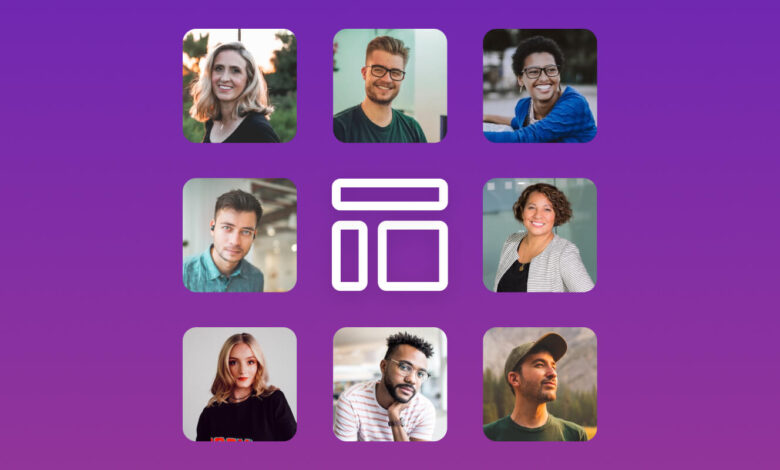
Over the last few years personal and professional development has become more popular than ever. Coaching programs have emerged as powerful tools for guiding individuals toward accomplishing their biggest goals and aspirations.
According to a 2023 report published by Allied Market Research, the online coaching market is expected to grow at 14% CARG reaching $11.7 billion globally in 2032.
Whether you are an aspiring coach hoping to create your own program or an entrepreneur seeking to implement coaching as part of your employee development strategy, understanding the fundamentals of building a coaching program is essential.
In this comprehensive guide, we’ll look into the step-by-step process of creating a coaching program, offering actionable insights, templates, and real-world examples to help you get started.
Even if you are embarking on this journey for the first time or seeking to enhance an existing program, this article will equip you with the knowledge and resources you need to build impactful coaching experiences that inspire growth, transformation, and fulfillment for your clients.
First, let’s get started by going over some basics.
What is a Coaching Program?
A coaching program is a structured and systematic approach designed to help individuals or groups achieve specific goals, improve skills, or overcome certain obstacles or challenges. It typically involves a series of sessions facilitated by a skilled coach who provides guidance, support, and accountability to the participants.
Coaching programs can cover various areas such as personal development, career advancement, leadership skills, health and wellness, and more. The program’s structure may include goal setting, action planning, skill-building exercises, feedback sessions, and progress tracking, all tailored to the unique needs and objectives of the participants.
The ultimate purpose of a coaching program is to empower individuals to unlock their potential, maximize their performance, and achieve desired outcomes in their personal or professional lives.
Why Create a Coaching Program?
Coaching programs are considered to be transformative vehicles for growth and achievement, benefiting those joining the program as well as its creators.
Let’s go over the benefits for the learners and creators a.k.a coaches, who want to build a coaching business and are choosing to invest in it.
Benefits for Learners
Personal Growth: Participants in coaching programs experience significant personal growth as they gain clarity on their goals, develop new skills, and overcome obstacles that may have been holding them back from achieving what they want.
Accountability and Support: Having a coach provides participants with accountability and support, helping them stay focused, motivated, and on track toward achieving their objectives.
Customized Guidance: Coaching programs offer personalized guidance tailored to the individual needs and circumstances of each participant, ensuring that they receive relevant, prompt, and actionable advice.
Confidence and Empowerment: Through the encouragement and feedback provided by the coach, participants build confidence in their abilities and feel more empowered to take bold actions toward realizing their aspirations.
Improved Performance: Participants often experience improved performance in various areas of their lives, whether it’s in their career, relationships, health, or personal development, leading to greater satisfaction and fulfillment.
As it becomes obvious, coaching programs offer a wide range of benefits for its participants – learners, while helping them embark on a transformative journey to improve their personal and professional lives.
Benefits for Creators
Impact and Influence: Creating a coaching program allows creators to make a meaningful impact in the lives of others by sharing their expertise, knowledge, and experience.
Professional Fulfillment: Developing a coaching program is highly rewarding for creators, as it allows them to leverage their skills and passion to help others succeed.
Monetization: Coaching programs can be an opportunity for coaches to monetize their knowledge through various means, providing them with a scalable source of income and the potential to build a sustainable business around their expertise.
Brand Building: By delivering valuable content and achieving tangible results for participants, creators can enhance their brand reputation and credibility within their industry, attracting more clients and opportunities.
Flexibility and Freedom: Creating a coaching program offers flexibility in terms of scheduling and delivery, allowing creators to maintain a healthy work-life balance while still serving clients effectively or even while working full-time.
Coaching program creators can also reap the benefits the program offers while building on their expertise. They can also start earning a decent amount of money from it, which makes coaching a great investment to begin with.
💁🏼♂️ Find out How Much Money Can You Make Selling Online Courses
Building an Online Coaching Program: 5 Easy Steps
Moving on to how creators can start developing their coaching programs from scratch, we have prepared an easy-to-follow guide to further streamline the process.
So if you are wondering how you can start coaching clients and grow your business, you are going to find this resource useful.
Step 1: Define the Purpose of Your Coaching Program
The first step to building a coaching program is defining its purpose. This requires you to answer the ‘why’ behind it, as well as finding out who your target audience is, your goals and objectives, and the scope of the program.
Identifying your target audience
Understanding who your program is designed for enables you to tailor your content, coaching model and approach, and messaging to meet the specific needs and preferences of your audience.
To identify your target audience, consider the following:
Look into demographic characteristics: Start by defining the demographic characteristics of your ideal participants, such as age, gender, occupation, income level, education level, and location.
Think about psychographic traits: Delve deeper into the psychographic traits of your target audience, including their interests, values, beliefs, motivations, challenges, and aspirations.
Conduct market research: Gather insights into the needs, preferences, and pain points of your target audience. This can involve surveys, interviews, focus groups, and analysis of existing data and trends.
Do a competitive analysis: Evaluate your competitors and similar coaching programs to understand their target audience and identify gaps or opportunities in the market that you can capitalize on.
Gather feedback and validation: Seek feedback from potential participants or trusted professionals in your network to validate your assumptions and ensure alignment between your program offerings and the needs of your target audience.
By clearly identifying your target audience, you can tailor your coaching program to address their specific needs and preferences, increasing its relevance and appeal.
Clarifying Goals and Objectives
Setting clear and measurable goals for your coaching program will help you stay focused, track its progress, and evaluate its success. For this, it might help to ask yourself the following questions:
What is the outcome or impact you want to achieve for your participants?
What specific outcomes do you want participants to achieve by the end of the program? (make sure these are SMART goals)
What knowledge, skills, behaviors, or mindset shifts do you want them to develop or experience as a result of participating in the program?
How will you track progress and evaluate the impact of your program on participants?
How does your coaching program contribute to your long-term vision and mission? (align goals with your vision as a coach or organization)
By clarifying your goals and objectives, you create a roadmap for your coaching program that guides decision-making, resource allocation, and program delivery, ultimately maximizing its impact and value for participants.
Defining the Scope of the Program
Defining the scope of your coaching program involves outlining the boundaries, deliverables, and parameters that govern the program structure and content. This helps manage expectations, ensure clarity, and maintain focus throughout the program.
To define the scope of your program, consider the following:
Program Duration
Determine the duration of your coaching program, including the total number of sessions, session frequency, and overall timeline.
For example, will it be a short-term program spanning 3 to 4 weeks or a longer-term program extending several months or even a year?
Session Structure
Define the structure of each coaching session, including the format, agenda, topics, activities, and duration. How can the sessions be organized to maximize engagement, learning, and progress?
Program Components
Identify the core components or modules of your coaching program, such as curriculum topics, coaching techniques, resources, and support materials. For this, you will need to think about which content and resources will be included to support participants’ learning and development.
Delivery Methods
Determine how the coaching program will be delivered, whether through in-person sessions, virtual meetings, online courses, group workshops, individual coaching sessions, or a combination of these methods.
Participant Responsibilities
Clarify the roles and responsibilities of participants, including attendance expectations, participation requirements, assignments, and action steps. What do participants need to do to fully engage and benefit from the program?
Scope Limitations
Set clear boundaries and limitations on what is included in the coaching program and what falls outside its scope. This may include specific topics or areas that will not be covered, as well as any limitations of your role as a coach or other responsibilities.
By defining the scope of your coaching program, you establish clear parameters that guide the program’s development, delivery, and management, ensuring that you are offering a structured learning experience for all participants.
Step 2: Design Your Coaching Program
Once you decide on your target audience, and got your objectives in place, you are ready to start planning your coaching program by organizing your sessions and curriculum.
To make this possible, you will need to determine the session length and frequency and develop an effective program outline.
First, think about the time constraints and availability of your participants and yourself.
Shorter sessions (e.g. 30-60 minutes) may be more suitable for you if you are a busy entrepreneur, while longer sessions (e.g. 90 minutes to 2 hours) allow for more in-depth discussions and activities. Frequency can vary based on the program’s intensity and objectives, ranging from weekly sessions to bi-weekly or monthly meetings.
Then, to develop a curriculum framework, break down your program goals and objectives into modules or topics that will be covered in each session, ensuring a logical progression of learning.
Your curriculum outline needs to include session topics, learning objectives, key concepts, activities, and resources for each module. While planning these, stay flexible as this will help you customize your content later on based on your participants’ needs, interests, and progress.
Having a specific framework in place can help you create a signature coaching program as well. This is a unique offering showcasing your expertise, approach, and style in the best way possible, setting it apart from other generic coaching services. It reflects your distinct methodology, philosophy, and values as a coach.
The best part? It is a reusable coaching framework that you can use multiple times to help clients accomplish a specific goal. This means you don’t have to design every client’s coaching journey from scratch every time.
Selecting coaching techniques and methodologies
Familiarize yourself with various coaching styles, such as directive coaching, non-directive coaching, cognitive-behavioral coaching, and solution-focused coaching, to find out which one is more suitable for you.
It might be helpful to consider the strengths and limitations of each coaching style and how they align with the goals and preferences of your learners. Then adapt your coaching approach based on their individual needs, learning styles, and personalities.
Also, you can make use of various coaching tools and resources to enhance the coaching experience and facilitate learning and growth. Such toolkits may include assessments e.g. personality assessments, leadership assessments, worksheets, templates, ebooks and text readings, videos, case studies, and real-life examples.
Incorporating assessment and feedback mechanisms
Define clear metrics and indicators to track your learners’ progress and measure the effectiveness of the coaching program. This may include quantitative measures like performance metrics and goal attainment, as well as qualitative feedback including self-assessments, and reflections.
Implement a system for collecting and documenting progress data throughout the program, such as progress journals, check-in surveys, or progress review meetings.
On top of this, create opportunities for ongoing feedback and reflection between you and your learners to assess progress, address challenges, and celebrate successes.
When doing so, it’s essential to encourage open and honest communication and provide constructive feedback that is specific, actionable, and supportive. Use this type of feedback from learners to refine and improve the coaching program, curriculum, and delivery methods as needed.
Need an all-in-one online course platform that has robust assessment tools and covers all your coaching needs? Try LearnWorlds.
Step 3: Create Your Coaching Program Materials
Depending on the type of coaching services you will be offering, it’s important to decide how you are going to deliver them and what type of coaching resources you will need to include in your program content.
For example, as a coach offering life coaching or health coaching you will most likely conduct 1:1 coaching sessions instead of group coaching ones, to better meet individual client needs. You may also need to use specific health-related questionnaires to assess each case of potential clients effectively.
Then again, if you are offering executive coaching, perhaps a group coaching program is more suitable to help your clients build and develop the skills they need as part of a larger team or community. For this, you may plan to use coaching exercises like role-playing or visualization.
Creating templates, checklists, and guides
Think about the content creation needs of the program and decide whether you want to build any templates, checklists, worksheets, exercises, guides or other resources to help you and your clients.
Session outlines
Session outlines serve as roadmaps for coaching sessions, ensuring that each session is structured, purposeful, and focused on achieving specific objectives.
Here’s how to create effective session outlines:
Start by defining the overarching goal or theme of the session.
Break down the session into key segments, such as introduction, discussion, activities, and conclusion.
Outline the main topics or discussion points to be covered in each segment.
Include prompts or questions to facilitate meaningful dialogue and exploration.
Allocate time for each segment to ensure that the session stays on track.
Provide space for participants to jot down notes, reflections, and action steps.
Review and refine session outlines based on feedback from participants and observations during sessions.
Worksheets and Exercises
Worksheets and exercises are valuable tools for enhancing learning, promoting self-reflection, and facilitating skill development in coaching programs.
Here’s how to create engaging worksheets and exercises:
Identify the key concepts, skills, or activities you want to reinforce or explore further.
Design worksheets that encourage participants to reflect on their experiences, identify patterns, and set goals.
Develop exercises that allow participants to practice new skills, experiment with different approaches, and apply learning to real-life scenarios.
Use a variety of formats, such as fill-in-the-blank, multiple-choice, open-ended questions, and interactive activities, to cater to different learning styles.
Ensure that worksheets and exercises are visually appealing, user-friendly, and easy to understand.
Provide clear instructions and explanations for each worksheet or exercise.
Encourage participants to complete worksheets and exercises between sessions to deepen their learning and engagement with the material.
Crafting supporting resources
As complementary and supporting materials, you might want to also prepare a list of text readings, books, articles, downloadable PDFs, e-books, and more.
Reading materials
Reading materials complement coaching sessions by providing additional insights, perspectives, and resources for your clients to explore independently.
Here’s how to curate effective reading materials:
Select high-quality articles, books, research papers, blog posts, and other relevant resources that align with the themes and topics covered in the coaching program.
Provide a mix of foundational readings and contemporary literature to offer a comprehensive understanding of the subject matter.
Offer summaries or discussion questions for each reading to guide participants’ engagement and encourage critical thinking.
Organize reading materials into categories or themes for easy reference and accessibility.
Share reading materials through your chosen digital platform, email newsletters, or online portals to ensure easy access for participants.
Encourage participants to share their insights, questions, and reflections on the reading materials during coaching sessions or in online discussion forums.
Multimedia Resources
Multimedia resources, such as videos, podcasts, and webinars, can enhance learning by providing visual and auditory stimulation, offering alternative perspectives, and illustrating more complex concepts in a dynamic and engaging format.
Here’s how to incorporate multimedia resources into your coaching program:
Identify multimedia resources that complement the themes and objectives of the coaching program.
Curate a diverse selection of multimedia content, including interviews with experts, TED talks, instructional videos, virtual workshops, and audio recordings.
Integrate multimedia resources into coaching sessions as supplemental learning materials or assign them as pre-work or homework assignments.
Provide guidance and context for each multimedia resource to help participants understand its relevance and how it relates to their learning goals.
Encourage participants to reflect on their insights, takeaways, and questions after engaging with multimedia resources, and discuss them during coaching sessions.
Leverage technology platforms and tools to facilitate access to multimedia resources, such as embedding videos in digital workbooks or creating playlists on streaming platforms
These resources can be included in a coaching package to offer additional value to your clients. You may choose to bundle these together in a single offering or even sell them as separate products or add-ons with different pricing.
Download these done-for-you templates for your coaching program!
Step 4: Prepare to Launch & Deliver Your Coaching Program
Once your coaching materials are ready, you can start preparing your program launch. For this, you will need to have a dedicated sales funnel or a marketing campaign in place to promote it effectively and encourage potential clients to participate.
💁🏼♂️ Need help? Learn How to Launch Your Online Course in 8 Steps
Recruiting and onboarding clients
To attract clients to your coaching program, you will need to build a strong online presence through a professional website. Leverage social media like LinkedIn to network and build relationships with potential clients and industry peers.
There is also email marketing, so if you already have an email list with interested subscribers, you can start promoting your coaching program there or via a pre-launch landing page, encouraging them to join in.
Last but not least, you can offer free resources or workshops to demonstrate your expertise and attract potential clients to your coaching program.
Conduct initial client assessments
The majority of coaches work with sessions using a video conferencing tool like Skype, Zoom, or Webex as a standalone tool, or inside a robust online course platform like LearnWorlds. Such tools are going to help you onboard new clients to the program and can kick-start the coaching process.
The first session involves assessing the needs of each client after completing the coaching form. This is a structured tool used to facilitate the communication between you and your clients that documents essential information on their progress and insights into the coaching relationship.
Before onboarding clients into your coaching program, you will need to conduct initial assessments to understand their goals, needs, and readiness for coaching.
Here are some tips on how to approach initial client assessments:
Develop intake questionnaires or surveys to gather information about clients’ backgrounds, challenges, objectives, and expectations for coaching.
Schedule discovery calls or meetings with potential clients to discuss their coaching goals, clarify expectations, and assess compatibility.
Collaborate with clients to establish clear, specific, and measurable goals for their coaching journey, ensuring alignment between their objectives and your coaching approach.
Use assessment tools or inventories such as personality assessments or goal-setting exercises, to gain deeper insights into clients’ strengths, preferences, and areas for growth.
Set clear boundaries including confidentiality, payment terms, and communication protocols, to establish a mutual understanding and agreement between you and your clients.
Delivering coaching sessions effectively
Getting to know your clients better and building rapport is fundamental for establishing a trusting and supportive relationship with them.
Practicing active listening during your sessions will demonstrate genuine interest and attention. It will help validate their thoughts, feelings, and experiences to foster a sense of understanding, empathy, and compassion, excluding judgment from the equation.
As a coach, you will be required to be authentic and transparent in your interactions. It will be your responsibility to create connection and trust, by sharing relevant personal experiences and insights. In all cases, you are also expected to treat your clients with respect and be mindful of their boundaries, cultural differences, and communication preferences.
Facilitating meaningful discussions
To keep the conversation going and stay on track with each session’s goals, you will need to implement some strategies in your coaching plan:
Clarify Objectives: Begin each session by clarifying the objectives and desired outcomes with your clients. Ensure that both you and your clients are aligned on the focus and purpose of the session.
Ask Powerful Questions: Use open-ended questions, reflective prompts, and exploratory inquiries to encourage deep reflection and self-discovery. Avoid leading questions and instead invite clients to explore their thoughts and feelings openly.
Active Engagement: Encourage active participation and engagement from your clients. Create a safe and non-judgmental space where clients feel comfortable sharing their thoughts, concerns, and aspirations.
Reflective Listening: Practice reflective listening by paraphrasing, summarizing, and validating your clients’ thoughts and emotions. Use linking and wrap-up questions, and reflect on their words to demonstrate understanding.
Challenge and Support: Strike a balance between challenging your clients to explore new perspectives and supporting them through their challenges. Offer constructive feedback and insights while providing encouragement and validation.
Facilitate Action Planning: Help your clients translate insights into actionable steps by co-creating action plans. Encourage them to set goals and identify concrete actions they can take to move towards their desired outcomes.
Managing logistics and scheduling
Efficient scheduling is essential for managing coaching sessions successfully, ensuring a smooth client experience as part of the coaching program.
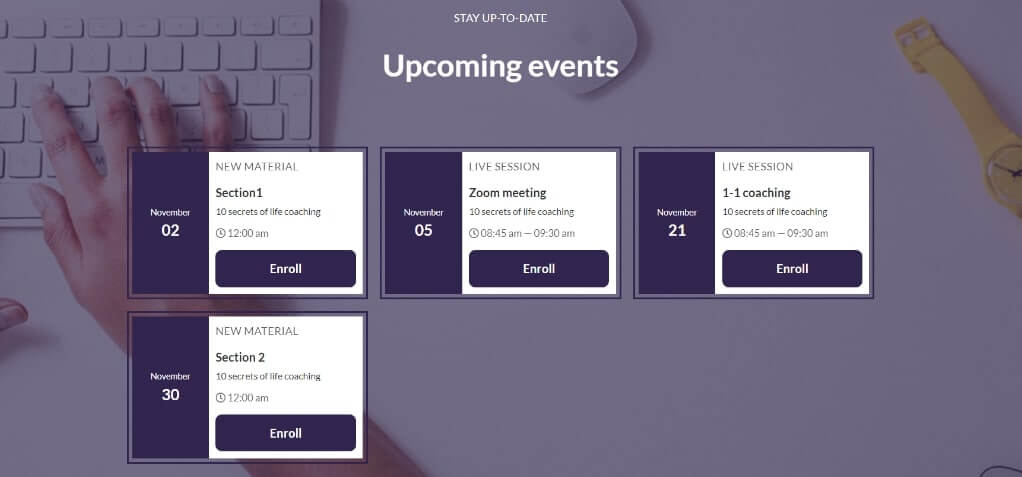
To make this possible, consider using an online scheduling tool like Calendly, to allow clients to book sessions at their convenience. These tools offer features such as calendar integration, automated reminders, and customizable availability.
You can also set up automated reminders for upcoming sessions to reduce no-shows and keep clients informed. Remind them of upcoming appointments via email or SMS, and include relevant details such as session time, agenda, and any pre-session preparation required.
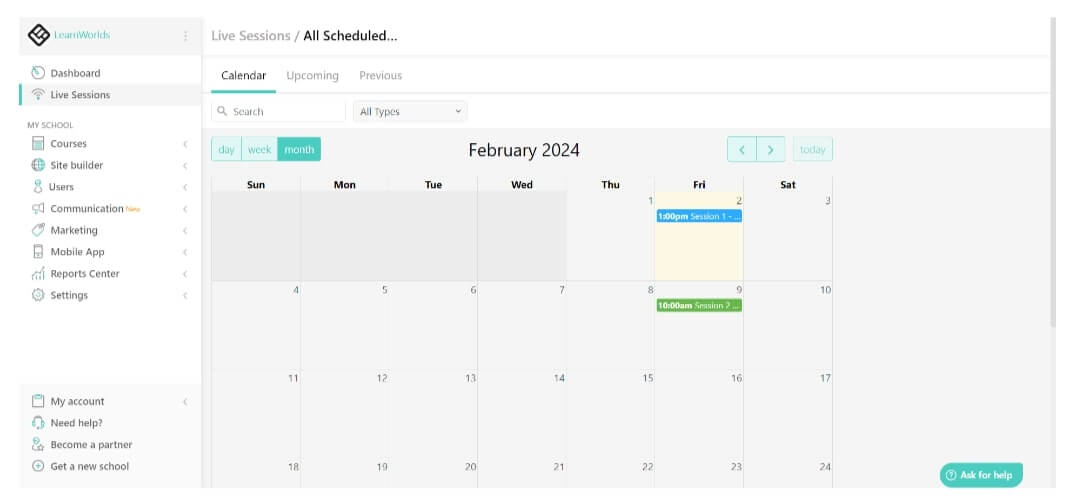
If you are using an online course platform to deliver your program, look for a calendar integration to avoid double bookings and ensure accurate availability. Syncing your schedule across multiple devices and platforms helps you stay organized and prevents scheduling conflicts.
Make sure to offer your clients a range of time slots to choose from, including evenings and weekends, to accommodate their schedules effectively.
Step 5: Monitor and Evaluate Your Coaching Program
Finally, to ensure your clients are making strides toward their goals, tracking their progress and evaluating your program’s effectiveness is imperative.
Tracking client progress
Establish clear benchmarks and milestones aligned with the client’s objectives. These provide measurable checkpoints to gauge progress and adjust strategies as necessary.
Regularly gather feedback from clients to understand their perception of progress, challenges faced, and areas requiring further attention. This insight allows for tailored adjustments to the coaching approach, ensuring alignment with the client’s evolving needs and aspirations.
Evaluating program effectiveness
Assessing the overall effectiveness of the coaching program is vital for continuous improvement and client satisfaction. This entails evaluating client outcomes against predefined goals and objectives. Analyze quantitative data, such as goal attainment and behavioral changes, alongside qualitative feedback to gauge the program’s impact.
Additionally, gather testimonials and reviews from clients to capture their experiences, successes, and areas of growth. Positive testimonials serve as valuable social proof and can help in attracting future clients, while constructive feedback informs program refinements and enhancements.
💁🏼♂️ LearnWorlds’ in-depth reporting gives you the most accurate and powerful insights into your clients’ progress and your coaching program’s performance.
BONUS: Inspiring Coaching Program Examples
Offering effective coaching requires more than just knowledge and skills—it demands a commitment to embodying key qualities and employing effective strategies for success.
In this bonus section, we’ll feature a few existing successful coaching programs to help you gather some inspiration. Besides learning from top industry leaders never goes out of fashion.
Tony Robbins – ‘Unleash the Power Within’
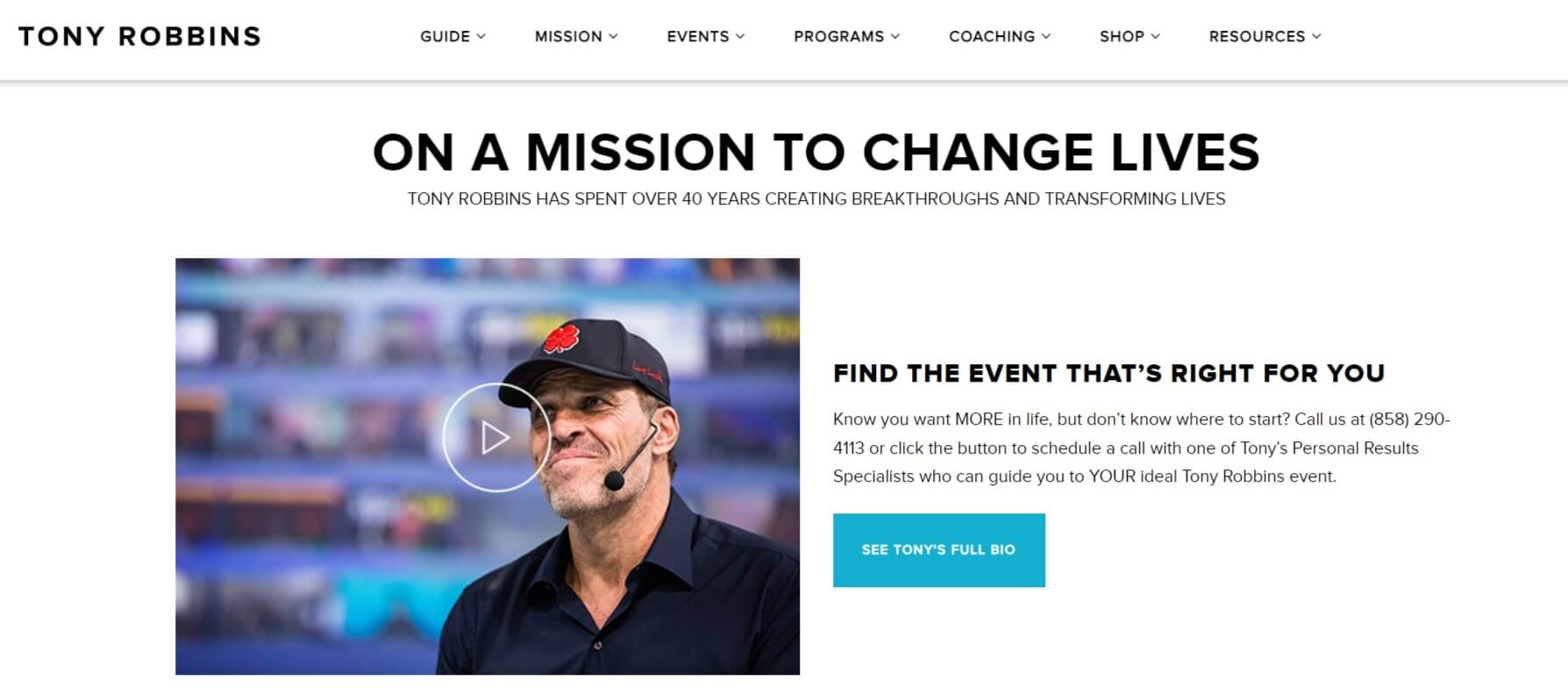
You know it and we all know it; Tony Robbins is perhaps the most recognizable coach in the world. This life and business strategist, motivational speaker, and best-selling author is known for his high-energy seminars, books, and coaching programs focused on personal development, wealth creation, leadership, and peak performance.
Some of his well-known ones include ‘Unleash the Power Within’, Date With Destiny’, ‘Business Mastery’ and ‘Life Mastery’.
Through his coaching, Robbins utilizes a combination of psychology, NLP (neuro-linguistic programming), and practical strategies to help individuals achieve breakthrough results in their personal and professional lives.
Robbin’s coaching resources include: blog posts, videos, seminars, workshops where participants engage in immersive learning experiences, books and publications, online courses and training programs, interviews, and podcasts.
Brené Brown – ‘The Daring Way’

Brené Brown is an American professor, author, and podcast host who has gained widespread acclaim for her work on vulnerability, courage, shame, and empathy. She is the author of several best-selling books, including “The Gifts of Imperfection,” “Daring Greatly,” and “Braving the Wilderness.”
Brown’s coaching and speaking engagements focus on helping individuals and organizations cultivate resilience, authenticity, and wholehearted living.
Through her TED Talks, books, podcasts, and online courses, Brown has inspired millions of people worldwide to embrace vulnerability, practice courage, and live more fulfilling lives. She is known for her engaging and relatable storytelling style, which resonates with audiences from diverse backgrounds.
Brown’s coaching resources include: books, workbooks, discussion guides, glossaries, checklists, online courses, podcasts, in-person conferences – live workshops, seminars, and speaking engagements for individuals, organizations, and conferences worldwide.
Robin Sharma – ‘The 5 AM Club Method’

Another renowned personality – Robin Sharma, is a Canadian author, speaker, and leadership expert known for his motivational books and coaching programs.
He is best known for his book “The Monk Who Sold His Ferrari” and his “Leadership Wisdom” series, inspiring millions of readers worldwide. Sharma’s coaching focuses on personal mastery, leadership development, and achieving excellence in both personal and professional life.
Sharma provides coaching and leadership development programs tailored to individuals, teams, and organizations.
His coaching and training offerings often draw from his books, including “The Leader Who Had No Title” and “The 5 AM Club,” as well as his online courses and seminars.
Sharma’s coaching resources include: books and publications, live seminars and workshops, online courses and programs, virtual coaching, interviews, and podcasts via ‘The Mastery Sessions’ podcast show.
Ready to Build Your Own Coaching Program?
Building a coaching program is not only an opportunity to share your expertise and make a positive impact but also a transformative experience for both you and your clients.
As you have learned throughout this guide, the process involves thoughtful planning, creativity, and a commitment to continuous improvement. However, the rewards far outweigh the challenges.
By creating a coaching program, you have the chance to:
Empower individuals to reach their full potential and achieve their goals.
Establish yourself as an authority in your field and build a thriving coaching practice or business.
Make a meaningful difference in the lives of others and contribute to positive change in your community or industry.
Remember, every successful coaching program starts with a single step. Whether you are a seasoned coach or just starting out, do not let fear or uncertainty hold you back. Take that first step, and the rest will unfold naturally as you gain momentum and confidence along the way.
Start building your coaching business with LearnWorlds. Get your free trial today!
(Visited 3,001 times, 3 visits today)
Kyriaki is a Content Creator for the LearnWorlds team writing about marketing and e-learning, helping course creators on their journey to create, market, and sell their online courses. Equipped with a degree in Career Guidance, she has a strong background in education management and career success. In her free time, she gets crafty and musical.



